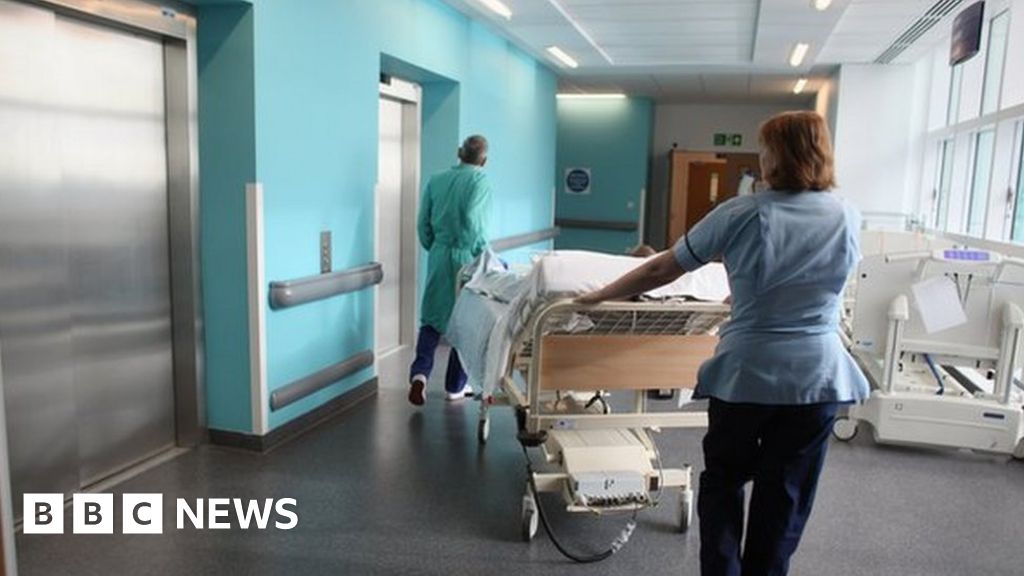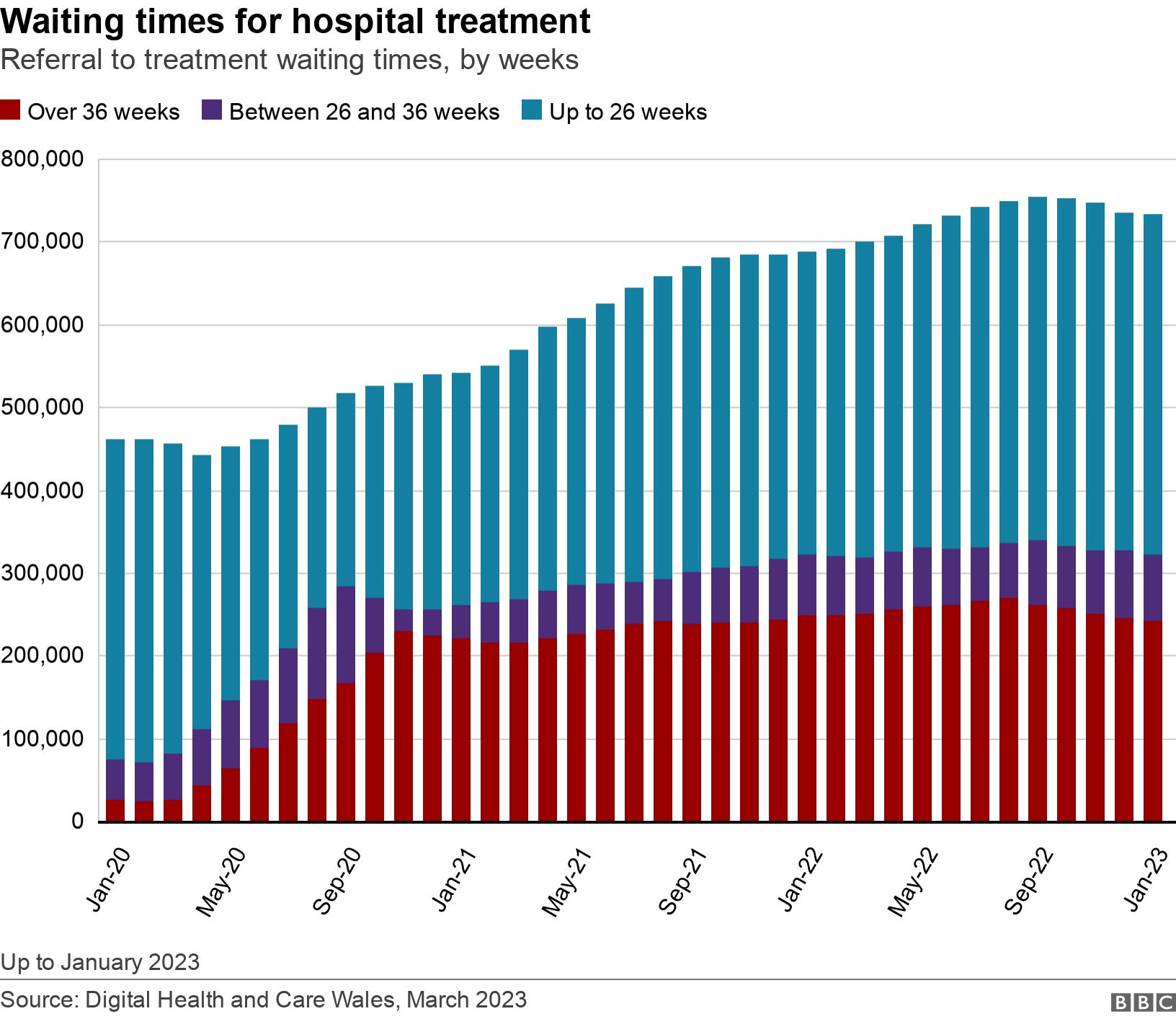文章管理 查看文章



Waiting times and ambulance response times are continuing to improve in Wales.
However, performance on the main cancer target was the worst on record.
A&E waiting times have bounced back from a record low in previous figures to the best performance in nearly two years.
The health minister said despite winter pressures, it was a picture of "progress being made and improvements in most areas".
Eluned Morgan however acknowledged that cancer performance was "still not where I expect it to be".
Although the proportion of patients starting treatment within 62 days of cancer first being suspected is the lowest on record, it "reflects our current focus on reducing the number of people that have already waited longer than 62-days for investigation or treatment", she added.
Ms Morgan said: "We are investing heavily in cancer services to improve early detection and provide rapid access to investigation, treatment and high-quality care."

The number of people waiting for hospital treatment, after referral, fell for a fourth month in a row.
There were still 734,116 "patient pathways" on the list - this is about 576,000 actual patients, when those who are on more than one waiting list are counted.
Those waiting more than a year or two years for treatment also continued to fall.
Those waiting more than a year fell by nearly 9,500 to 152,464 - the lowest number for two years.
There are still 41,103 patients waiting more than two years.
There are also still higher proportions of long waits compared to England, where just over 5% of patients are waiting more than a year, compared to 20.8% in Wales.
There are also hardly any patients waiting two years in England, while people waiting that long still make up 5.3% of the waiting list in Wales.

The key post-pandemic NHS Wales recovery target - that no-one should wait more than a year for an outpatient appointment - continues to be missed, although in-roads have been made on the list for a fifth month in a row.
There were still 67,615 patients waiting more than a year, a monthly drop of 7,358.

There was a second monthly improvement in ambulance response times, with 50.9% of immediately life-threatening "red" calls attended to within eight minutes in February, but still worse than 12 months earlier and below the 65% target for the 31st month in a row.
The average response time to "red" calls was seven minutes 54 seconds, which was faster than in January but 31 seconds slower than February 2022.
There was another fall in handover delays. There were 11,397 "lost" hours by ambulances spending time outside major A&E units, unable to drop off patients beyond the 15 minute target - the lowest figure since the summer of 2021.
Numbers stuck in hospital despite being well enough to be discharged are roughly the same as the previous month, with just under 1,000 patients waiting for a care package or support to be arranged.

A&E waiting times have bounced back from a record low two months before to the best performance in nearly two years.
Against the four-hour target, 71.6% of people were admitted, transferred or discharged within that time frame.
Meanwhile, 8,036 people spent 12 hours or more in A&E before being seen - no-one should wait that long under current targets - although this was the lowest monthly total since the summer of 2021.
The median waiting time was two hours and 37 minutes - two minutes slower than the previous month but closer to pre-pandemic waiting times.
When we look at major emergency units only, Wales is also performing better than A&E units in England for a sixth month in succession, with 62.6% of patients seen within four hours, compared to 56.8% in England.
However, cancer performance figures have had their worst month since the new target was introduced.
Only half of people started their first treatment in January within 62 days of cancer being first suspected.
That was as low as 38% in both the Cwm Taf Morgannwg and Hywel Dda health board areas.
It continues to be lower too for gynaecological and prostate and bladder cancers.
Today's figures show more people coming through the system for cancer care. Clinicians have talked for some time of capacity issues, so the fact fewer are starting treatment within two months perhaps shouldn't be a surprise - but dropping to just 50% (against the target of 75%) still makes for uncomfortable reading.
Elsewhere, the numbers waiting for planned care dropped marginally. But in emergency care, while A&Es showed waits were improving, and a slight improvement in ambulance response times, February was a month beset with ambulance strikes. This caused ripples as patients knew care would be disrupted.
The health minister has asked that NHS bosses put even greater focus on cancer diagnoses and treatment - ahead of a ministerial cancer summit next week.
Enter a postcode to find out what is happening in your area with A&E, ambulances and hospital waiting lists across the UK.

How are your local NHS services coping this winter?
Enter a postcode to find out. Eg ‘B1 1RF’
Last updated: Thursday 23 March
About the data
Data for England is shown by NHS trust, where the trust includes at least one hospital with a Type 1 A&E department. Type 1 means a consultant-led 24 hour A&E service with full resuscitation facilities. Data for Wales and Scotland is shown by Health Board and in Northern Ireland by Health and Social Care Trust.
When you enter a postcode for a location in England you will be shown a list of NHS trusts in your area. They will not necessarily be in order of your closest hospital as some trusts have more than one hospital. Data for Wales and Scotland are shown by NHS board and by Health and Social Care trust in Northern Ireland.
Comparative data is shown for a previous year where available. However, where trusts have merged there is no like-for-like comparison to show. Earlier data is not available for all measures, so comparisons between years are not always possible.
A&E attendances include all emergency departments in that trust or health board, not just major A&E departments, for example, those who attend minor injury units.
Each nation has different target times for some of the measures shown, therefore comparisons between them may not be possible.
A modern browser with JavaScript and a stable internet connection are required to view this interactive.
If you can't see the lookup, click here
Related Topics